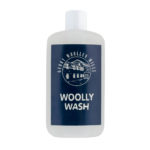The Moths Are Back
It is on the news and in all the newspapers – it is official after such a mild Winter the moths are back!
With a shop full of old textiles and antique Welsh blankets and tapestries we have been fighting moths for over twenty years! All our advice is tried and tested!
With 100s of antique textiles in our shop in Hay on Wye – the moth is our greatest enemy. We have devised a system to protect ourselves from moth attack, and regularly move our textiles about, checking them for damage. I do the same at home giving my wardrobes a quarterly spring clean, somehow the displacement protects against moth activity
As a form of moth protection we have devised our own Woolly Wash. Especially developed for us as a conditioning wool wash with natural anti moth ingredients. We recommend washing all woollen blankets at a low temperature, 30 C and adding 1-2 teaspoons of Blanket Wash each time to give added protection. Divinely scented, made from lavender, geranium, bitter orange, citronella, white camphor, oak moss and andiroba. We wash all our blankets in this Wool Wash before offering them for sale.
The shop in Hay is a visual feast with colourful piles of blankets on every wall. Within each stack we carefully insert our natural Anti Moth Sachets. This is one of the best products offering natural protection against moth damage that we have found and has been tried and tested in our shop. Developed from botanical oils the sachets are packaged in tree preserving cotton paper, and a choice of individual hanging sachets or a pack of 3 square sachets. The individual hanging sachets are ideal for woollen clothing, we use them with our beautiful range of wool Clothing: Shetland Wool Cardigans, Cashmere Scarves, Tweed Coats and the Kashmir Wool Waistcoats etc… We also use Anti Moth Traps – one of the most effective forms of chemical free protection against moths. This is an anti moth pheromone trap and catches the dreaded clothes moth on the sticky refill. The pheromone refill needs to be replaced every three months to make the trap effective.
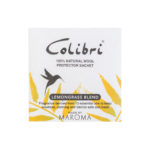
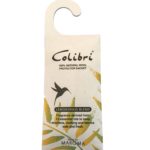
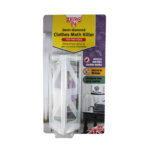
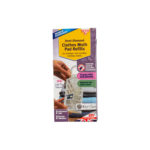
Not all moths will attack your clothes. Tineola bisselliella is the main culprit, more commonly known as the Clothes, Webbing Clothes or Clothing Moth. This moth is a serious pest as they find nourishment from clothing, and in particular wool, but beware they can also be attracted by other natural fibres.
Contrary to popular belief it is not the adult moths that eat clothing, but their larvae. In fact adult moths don’t eat at all, their mouth parts are not formed to even try to eat. The larvae of this moth are the culprits as they have the ability to turn keratin into food. Keratin is the hard protein found in fibres. Beware they are particularly attracted to human sweat found in dirty materials, including sofa fabrics, so it is helpful to keep your woollies clean and also to have your sofa covers or upholstery cleaned regularly. The moth larvae needs this moisture from the sweat because they do not drink water. Basically the female moths work hard to find the perfect place to lay eggs, primarily close to a food source and not near sunlight. Once the eggs hatch the larvae bury deep into the nearest source of fibre to escape light, simultaneously they use their mouths to consume the fibre in order to gain enough strength to spin a cocoon. With its protective cocoon around it the larvae will continue to eat here and there, leaving the distinctive holes that moths are famous for. The good news is that after a few days the larvae mutates to a pupae and once this happens all feeding ends and your textiles are safe again.
